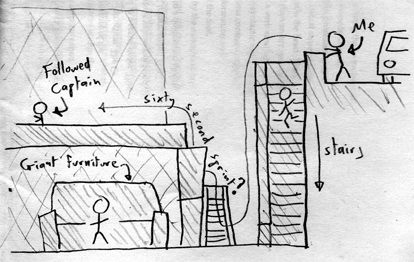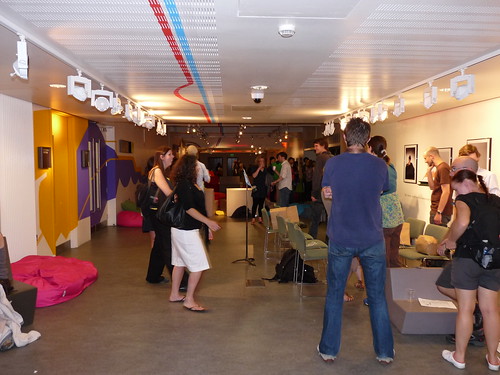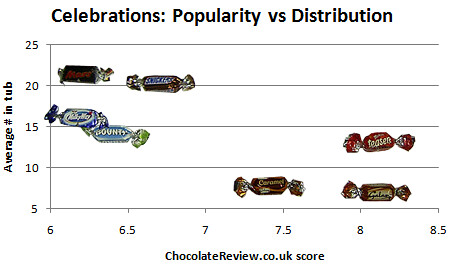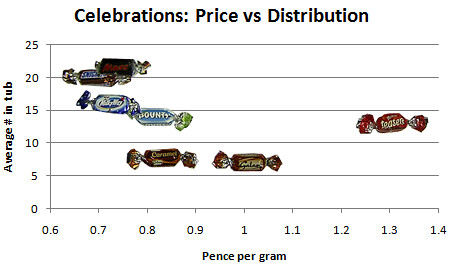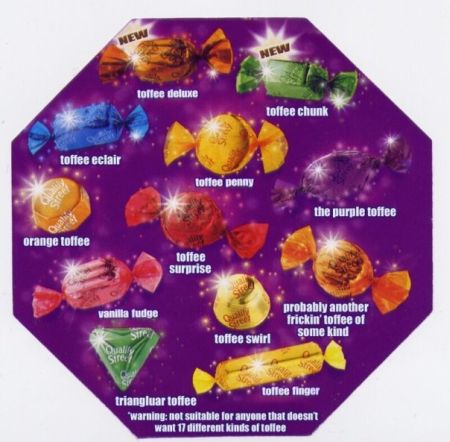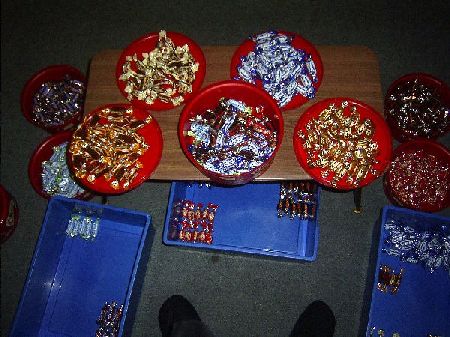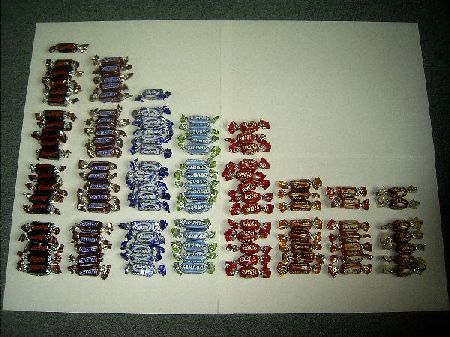(Continuing from my earlier post, introducing Sandpit 13)
The Premise
It’s a familiar part of many films: one character is attempting to follow another. They must avoid detection, as the followed, should they become aware of the tail, will attempt to elude them. It seems like it would make a fun game, but it’s not at all clear how you might do that. But regular Sandpit contributor group Coney seem to be very, very close to having solved this challenge.
Two teams: the Following, and the Followed. Increasingly useful clues to find the ‘Basekeeper’ are texted to the leader of the Followed at set intervals; the leader of the Following receives these texts 5 minutes later. The game would end a precise 42 minutes after the start, at which point the Followed team would receive one point for each of their 11 members that found the Basekeeper, while the Following team would receive two points for each of theirs.
Under these conditions, the game of following and being followed emerges.
My Experience
The rules were explained, in a little more detail than my précis above, but not as lucidly as would have been ideal. The act of following was assumed and talked around as if it was in some way what we were ‘supposed’ to do, rather than as a naturally emergent strategy given the rules, which in retrospect feels like a clearer way to understand the game.
Additional key points not mentioned above:
- A secondary goal would be to find one of the organisers at a ‘mid point’, each team scoring one point for each of their number that discovered him
- The Following (my team) applied orange stickers to themselves prominently; the Followed did the same with yellow. In this way, despite being strangers, we could quickly identify one another.
- Team captains were chosen based on texting ability and handset usability, and all 10 team members provided the captain with their own numbers so that he could fan out the clues as he received them, as well as guide the team’s overall strategy.
- The game would end at 20:12.
- We were each supplied with a map to indicate the playing zone (scanned below)
Before the rules had time to sink in, before we could get to know our own team beyond the colour-coded stickers (“if you could all now get to know each other in a few seconds”), and before we could exchange more than a handful of ideas about what a good strategy might be (“if all else fails, shall we meet at the top of those stairs?”), we were formed up into two lines, and at eight second intervals, alternating members of each team were instructed to “Go”, starting with the captains, who each immediately ran to what they perceived to be strategic locations.
Despite a feeling that we should ponder and discuss strategy first, an urgency and expected behaviour had been conveyed, so each member of the Followed would take off at a run as soon as they were allowed, and eight seconds later the corresponding member of my team, the Following, would run after them. It seemed as if eight seconds was indeed an ideal head start, being just enough time to get out of sight.
By the time it came to my turn (I think I was about 8th) I still couldn’t convince myself that a one-to-one pairing of Followed with Following was the best strategy. Sixteen short seconds earlier my friend, Clare, had set off in pursuit of a Followed (whom I shall call Eve, for convenience), so I opted to join them. I realised in doing this that I was denying my implicitly assigned opposite number the pleasure (at least in the initial stages of the game) of being pursued, but I hoped she might instead fear that I was so stealthy in my following she could not spot me.
(After the game was over, she asked whether I had been following her at all and I had to come clean. Her disappointment was palpable, and salutary).
As I caught up with Clare, the power of the game’s rules to create interesting situations became apparent. Eve had slowed down and was trying to spot if Clare was following her – but did not know about me.
At this point I should explain a little about the location. This particular part of the South Bank is a highly connected maze of multi-level concrete walkways and bridges, so the potential for both eluding a pursuer and following someone unnoticed is incredible.
I opted to veer off and take a higher level, from which I could view both Clare and Eve. Moments later I was in a postition to see that Eve was doubling back, out of Clare’s sight. I had seconds to give Clare a warning, but realised abruptly that if I shouted I would give away my presence. I waved my arms madly, but within moments Clare disappeared from my sight behind a parked lorry – running straight into Eve. I had failed, and even though the stakes were low, I felt surprisingly tense as I waited for one or other of them to emerge.
As it turned out, they came out together, talking and walking side by side, heading back the way we had come. The illusion of danger was broken. I headed to the notional rendezvous point at the top of the stairs alone.
I arrived to find our captain and an alarmingly large number of other Following team members, all of whom had been eluded by their respective Followed. By this time our first clue had come in – ‘outside rather than inside’, which didn’t narrow things down much. Presumably the Followed team had received the next instruction by now, but they were nowhere in sight. There was only one thing to do.
We split up.
I ran in the direction that seemed most interesting (towards Queen Elizabeth Hall), scanning the hordes of bystanders for day-glow yellow stickers or suspicious behaviour. Then the next text message arrived – “2nd clue: basekeeper can see the river”. That cut things down nicely, just as things were starting to seem hopeless.
I bumped into some other team members and told them my idea: if the basekeeper is near the river, I reasoned, perhaps that means the secondary goal – the ‘mid point’ – is away from it. While the others checked along the riverbank, I would run to the Imax and check around that area.
The Imax occupies a strange space. It’s a large circular building surrounded by a raised roundabout, reachable only through underground tunnels that curve away in every direction, baffling your sense of direction. I couldn’t see the mid-point man, but I could see two people behaving very strangely. They were moving around a thick pillar, scrupulously avoiding one another’s gaze, holding either mobile phones or cameras – I don’t particularly recall.
They were players, I presumed, but not players of this game. I interrupted their strange dance to ask if they had seen a middle-aged man in a blue shirt with a graze on his nose (realising I was solving another challenge as I did so – describe someone you have met only briefly and didn’t particularly study). It was a strange interaction, talking to two people that were determined to ignore one another’s existence. In any case, they hadn’t seen him, and time was moving on – I checked my watch and saw 19:58, meaning just 14 minutes remained. I took the exit that leads to Waterloo bridge at a run, since that would at least offer a raised vantage point.
I saw someone with an orange sticker – a fellow Follower. They told me the mid-point had been found, and was in fact in the bus stop just 10 meters further along the bridge. I ran and gave him the code phrase – “The Following have found you” – and he duly noted me down. I realised that if we couldn’t succeed in finding the basekeeper, we could at least get as many of our number to the mid-point as possible. I phoned Clare and gave her directions.
At 20:04 a text message arrived – “3rd clue was bonus station waiting for bus north on Waterloo bridge. Regroup point has moved in front of national theatre.” I scanned the area, and suddenly spotted Clare and another Following at the bus station on the opposite side of the bridge, across four lanes of traffic and perhaps 60 meters away – the Northeast side of the bridge, when in fact the correct location was the Southwest. Could I shout loud enough? Should I run closer first and then try to draw their attention? No – I simply reached for my mobile once again, and leveraged billions of pounds of infrastructure and technology to help me make eye contact.
As the prophesied end time of 20:12 drew near, things seemed to accelerate – just as Clare and two other Following arrived, we received the 20:06 text message “4th clue: basekeeper east of Waterloo bridge. Mike can you go north of Thames in case?“. Clare and the others made contact with the mid-point (by now I think at least 6 of us had done so), and we then crossed to the East side of the bridge. Already another text – “5th clue. Basekeeper can be seen from stone circle between giant furniture and river. That is the regroup point”.
We paused to survey the view from that side of the bridge – we could see the circle and giant furniture, just below. Surely that should mean we could spot the basekeeper… just then we spotted the captain of the Followed, perhaps just a sixty-second sprint away, down the stairs from the bridge, across a pedestrianised area, up some stairs and striding across the open cafe area set above the giant furniture.
“That’s him!” I cried, “That”s the captain! He must know where the base is! Get him!” We launched in pursuit – and then I paused, realising that observing is potentially more powerful than following. “You guys get over there, I’ll keep an eye on him”.
I checked my watch. We had perhaps three minutes – but was my watch fast or slow? We had never synchronised watches. Another movie trope suddenly made sense.
The captain of the Followed was talking with a random woman sat at a table overlooking the stone circle. Was he asking her if she had seen anyone suspicious? Was she actually another team member? Or could she actually be the Basekeeper? I realised I had been assuming from the start that the other organiser would take the role – what if I was wrong? I ran down the stairs.
When I reached the balcony level, I found the other Followers, but the Followed captain was nowhere to be seen. There couldn’t be much more than one minute to go. “Have you seen the basekeeper?” “No, where did the captain go?” “No idea – I saw him talking to that woman, but she couldn’t be the basekeeper, right..?”
I approached the stranger as the others held back. She seemed like a normal cafe customer, nonchalantly talking to someone on a mobile phone and apparently reading a book at the same time.
“Er, hello… the, um, Following have found you?”
She smiled and apologised to the person on the phone. “Yes.” She withdrew a piece of paper from her book. Automatically, by some instinct I have never felt before, I raised both my arms as I turned to the rest of the Following. “This is it!!”.
After a final scramble to get team members together, this was the last text I received from our captain: “Final: The Followed score 11 and The Following score 23 – victory beer at the spirit level”.
Conclusions
Just as we had been told at the start, The Following is indeed a game coming to the end of the development cycle. Here’s what I think could still potentially be improved:
- The instructions at the start are critical. These should be carefully scripted in advance, and as someone pointed out on the day, it’s much easier to get your head around if you are told if you are a Following or a Followed before hearing how the game works.
- More time to strategise and get to know one another would help a lot.
- Although it’s obvious in retrospect, and felt like a fun twist at the time, I think it should be emphasised that the Basekeeper could be anyone.
- Given how many Followed eluded the Following in the first part of the game, I wonder if 7 seconds might be a better lead time – but this will vary hugely depending on the layout of the initial location.
- As a Following, the game felt impossible in the first 15 minutes – a smaller play area on the map, or some earlier clues, would help here.
That’s all I can think of, but do note that all of these are minor quibbles – in the end the game played out in a very satisfying fashion, and I am very keen to play it again.
At the time of writing, the next game of The Following will take place as part of the 2009 Hide and Seek Festival, again at the Southbank Centre, on Saturday 1st August 2009. (Also note that I did check with Coney, and subsequent games will use different locations and clues to those described here).
-metatim
To keep up with Sandpit and other similar events, follow their blog, sign up for the mailing list, or join the Facebook group.

